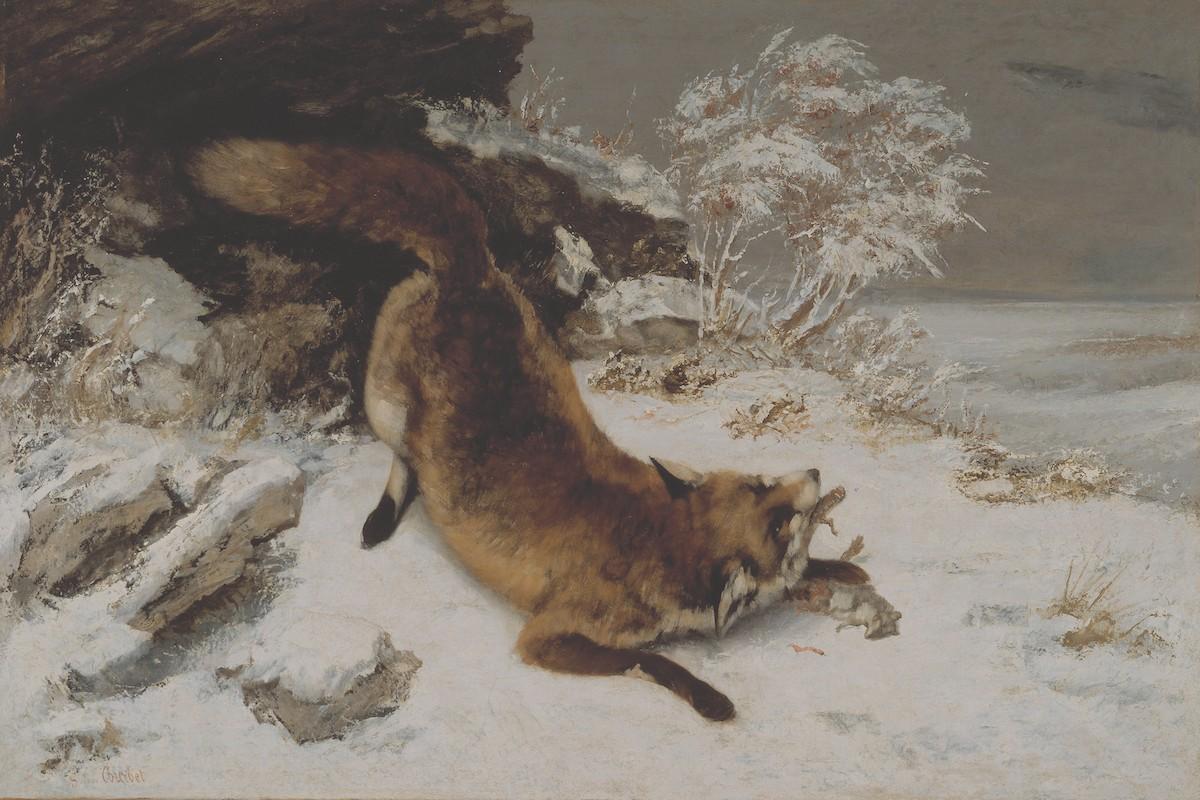
Gustave Courbet, Fox in the Snow, 1860, oil on canvas, Dallas Museum
of Art, Foundation for the Arts Collection, Mrs. John B. O'Hara Fund,
1979.7.FA.
Located in the nation’s largest arts district, the Dallas Museum of Art was founded in 1903. One of the country’s ten largest art museums, the DMA moved to its current 370,000-square-foot location in 1984. The Edward Larrabee Barnes–designed building was the first arts organization in the Dallas Arts District. Distinguished by innovative exhibitions, groundbreaking educational programs, and a global collection spanning 5,000 years, with over 24,000 works of art, the DMA offers a wide range of artistic experiences. Working with curators at the DMA, we have selected 10 works from their permanent collection that everyone who visits the museum should see.
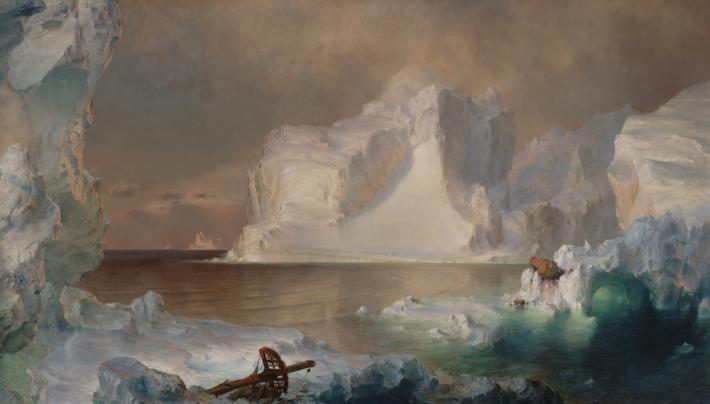
Frederic Edwin Church's (American, 1826 - 1900) masterpiece, The Icebergs (1861), depicts icebergs lit up seductively by rays of evening sunlight, the ocean gleaming in blue-green splendor, a broken mast in the foreground suggesting danger. First exhibited at a Civil War fundraising exhibition, it was dubbed "the most splendid work of art that has yet been produced in this country." Lost after its initial purchase by an English railroad baron, the painting was rediscovered in the 1970s, breaking all American art auction records when it was purchased anonymously as a donation to the DMA.
Image: Frederic Edwin Church, The Icebergs, 1861, oil on canvas, Dallas Museum of Art, gift of Norma and Lamar Hunt, 1979.28.
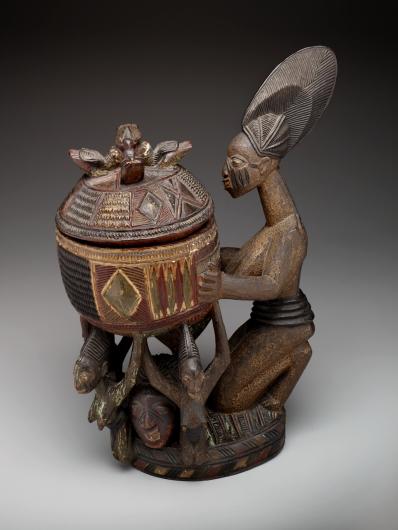
Employed by Yoruba royalty, Olowe of Ise (Nigerian, 1875 - 1938), carved this innovative painted wooden sculpture, Kneeling female figure with bowl (olumeye), depicting the traditional Yoruba hospitality ritual of offering kola nuts to guests. An olumeye, or woman “who brings honor," holds a wooden bowl elaborately decorated with bold geometric designs, supported by the upraised hands of female figures around its base. A bearded head caged in by the figures can actually move. Olowe’s works are in museums and private collections in Europe, America, and Australia.
Image: Olowe of Ise, Kneeling female figure with bowl (olumeye), c. 1910 - c. 1938. Wood, pigment, and paint. Dallas Museum of Art. The Eugene and Margaret McDermott Art Fund. Inc., 2004.
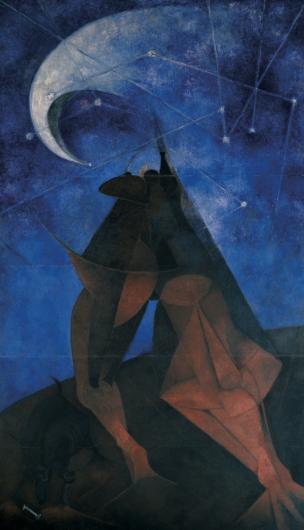
El Hombre (Man) (1953), by Rufino Tamayo (Mexican, 1899 - 1991), is a portable mural. Comprised of three large panels, it was commissioned for the DMA as part of the Museum’s efforts to expand its collection of Mexican and Latin American art. A monumental abstract red figure stands, reaching up into the whimsically swirling sky. Known for skillfully combining European painting styles such as Cubism with Mexican folk themes, Tamayo created a piece that feels magically hopeful.
Image: Rufino Tamayo, El Hombre (Man), 1953, vinyl with pigment on panel, Dallas Museum of Art, Dallas Art Association commission, Neiman-Marcus Company Exposition Funds, 1953.22.
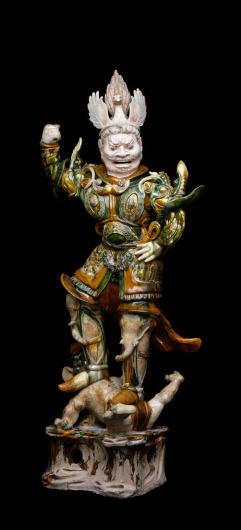
An early 8th century CE Buddhist sculpture, Lokapala (Heavenly Guardian), by an unknown artist, is a magnificent example of Chinese protective deity figurines. Combining Daoist and Buddhist iconography, this sculpture is of a fierce man in decorative orange and green armor, with a fantastical avian helmet, triumphantly standing on a writhing demon.
Image: Unknown artist, Lokapala (Heavenly Guardian), early 8th century CE, China, Asia, earthenware with three color (sancai) lead glazes, Dallas Museum of Art, The Eugene and Margaret McDermott Art Fund, Inc., in honor of Ellen and Harry S. Parker III, 1987.360.1.McD.
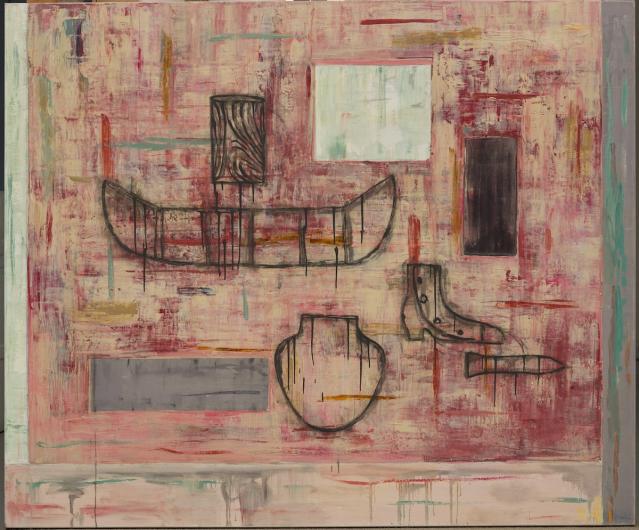
Groundbreaking multi-media artist Jaune Quick-to-See Smith (b. 1940), of the Confederated Salish and Kootenai Nations, celebrates contemporary Native American culture while examining America’s problematic past and present. An excellent example of her work combining abstraction and collage, Montana Memories: White Pine combines abstract colored rectangles, accenting slashes of color and line drawings in dripping black paint of 19th century paraphernalia, including a canoe and an old-fashioned button-up boot.
Image: Jaune Quick-to-See Smith, Montana Memories: White Pine, 1989, mixed media on canvas, Dallas Museum of Art, TWO x TWO for AIDS and Art Fund, 2020.15. Courtesy the artist and Garth Greenan Gallery, New York.
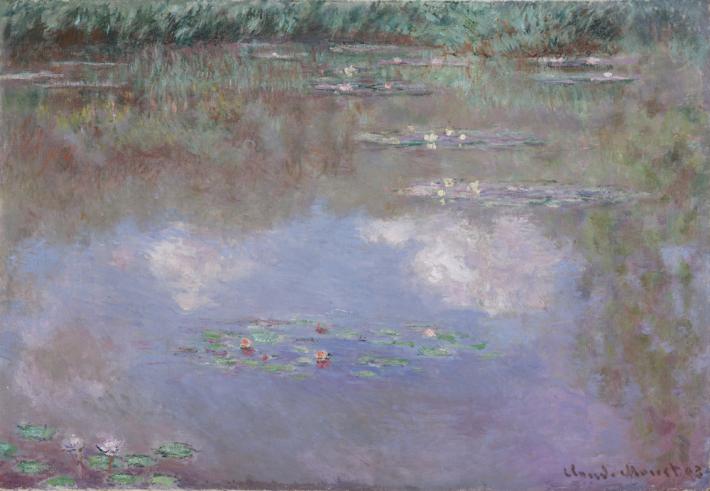
An example of founding Impressionist Claude Monet’s (1840–1926) iconic water garden paintings, The Water Lily Pond (Clouds), 1903 is one of over 250 paintings Monet created in the last thirty years of his life. The painting’s unusual perspective focuses on the clouds reflected among the lily pads on the pond’s surface.
Image: Claude Monet, The Water Lily Pond (Clouds), 1903, oil on canvas , Dallas Museum of Art, The Eugene and Margaret McDermott Art Fund, Inc., bequest of Mrs. Eugene McDermott in honor of Nancy Hamon, 2019.67.13.McD.
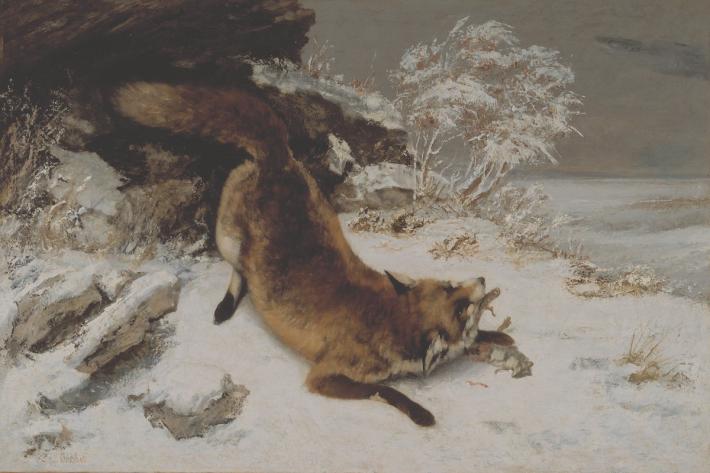
Fox in the Snow, 1860, is one of four critically acclaimed paintings by renowned French Realist Gustave Courbet (1819 - 1877) exhibited at the Salon of 1861. Courbet masterfully portrays a fox devouring a rodent. The fox is crouched against the snow, tensed to run if necessary, its fur rendered in painterly tactile vitality. The neutral palette of a snowy background became something of speciality for Courbet.
Image: Gustave Courbet, Fox in the Snow, 1860, oil on canvas, Dallas Museum of Art, Foundation for the Arts Collection, Mrs. John B. O'Hara Fund, 1979.7.FA.
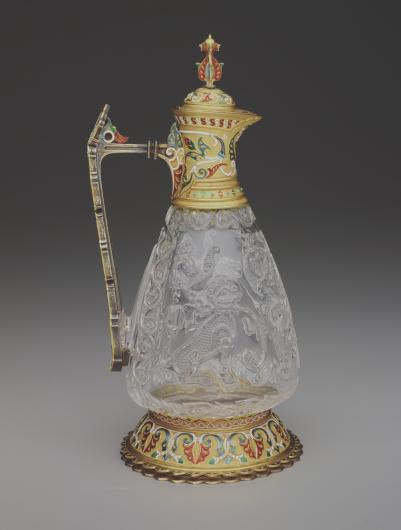
Created by an unknown artist for rulers of Cairo during the Fatimid period (909–1171), Rock Crystal Ewer with Gold and Enamel Mounts was sold to Europeans sometime in the 1060s, and embellished by noted French gold and silversmith Jean-Valentin Morel (1794 - 1860). One of only seven surviving rock crystal ewers, it was created with immense skill—the delicate crystal walls are only one millimeter thick in places, while the surfaces are engraved and embossed with intricate patterns.
Image: Unknown artist and Jean-Valentin Morel, Rock Crystal Ewer with Gold and Enamel Mounts, Ewer: 980 - 1020 CE; Spout, handle and base: completed April 1854, rock crystal, gold, colored enamels, The Keir Collection of Islamic Art on loan to the Dallas Museum of Art, K.1.2014.1.A-B.
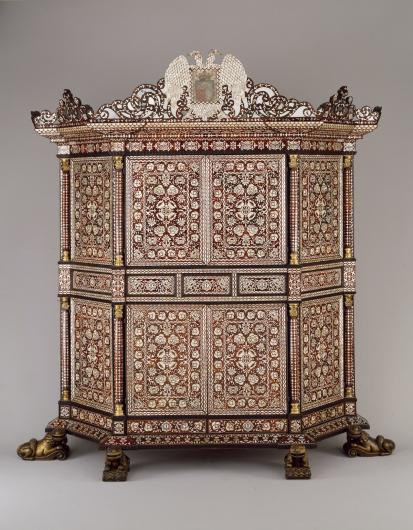
This immense mahogany Cabinet c. 1680–1700 by an unknown artist was crafted in the Portuguese colony of Gôa in India. Elaborately embellished with thousands of pieces of mother-of-pearl and tortoiseshell, arranged in botanically suggestive patterns, the cabinet was used to display curiosities and treasures. Upon completion, it was likely shipped to a major Peruvian trade center in Mexico, and purchased by the Viceroy of Peru.
Image: Unknown artist, Cabinet, about 1680–1700, mahogany, mother-of-pearl, ivory and tortoiseshell, Lima, Peru, South America, Dallas Museum of Art, gift of The Eugene McDermott Foundation, in honor of Carol and Richard Brettell, 1993.36.A-EE.
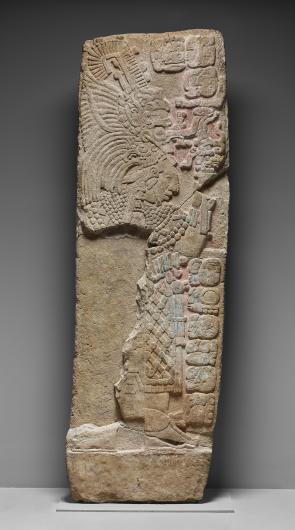
Sculpted by unknown Maya artists, the beautifully intricate low-relief limestone wall panel, Wall panel depicting Ix K'an Bolon ("Lady Yellow Nine") in ritual dress, 692 CE, portrays a royal Maya woman wearing a towering feather headdress, beaded collar, and open-work jade-bead skirt, bordered by hieroglyphics. Residual red and blue pigment suggests the sculpture was installed in a wall or door jam, where it was protected from the elements.
Image: Maya, Wall panel depicting Ix K'an Bolon ("Lady Yellow Nine") in ritual dress, 692 CE, limestone, stucco and pigment, Pomoná, Southern Maya lowlands, Tabasco, Mexico, Dallas Museum of Art, Foundation for the Arts Collection, gift of Mr. and Mrs. James H. Clark, 1968.39.FA.
Megan D Robinson
Megan D Robinson writes for Art & Object and the Iowa Source.























